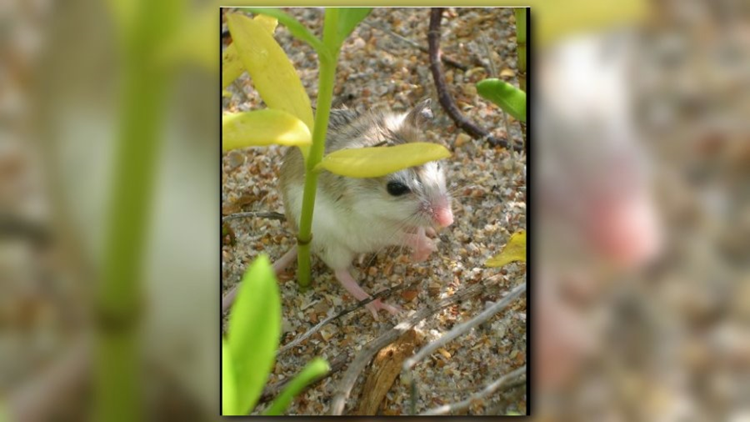The survival of a rare mouse considered crucial to the ecosystem of Anastasia Island rests on the restoration of coastal dune habitat destroyed by recent hurricanes, according to wildlife biologists working to protect the endangered species.
The Anastasia Island beach mouse is vulnerable to potential extinction, the biologists say.
The mice once lived on almost all the St. Johns County coastline but no more. Recent habitat loss due to Hurricanes Matthew and Irma as well as past beach development has taken a toll on the shy nocturnal rodent, according to Florida Fish and Wildlife Conservation Commission and St. Johns County scientists.
It’s unknown how many of the mice remain in the wild. It’s likely, scientists say, many perished in the recent hurricanes that destroyed a large swath of their dune habitat.
“Because the dunes got pushed back so dramatically ... Considering how much dune we lost, my gut tells me that we probably lost a large chunk of the population. They probably hunkered down and got washed out,” said Tara Dodson, environmental supervisor for St. Johns County.
The Florida Fish and Wildlife Commission and St. Johns County have partnered with the U.S. Fish and Wildlife Service, the University of Florida and several other state and federal agencies in a project to restore the dune habitat and evaluate the mice population.
“It’s not that we’re restoring habitat just for beach mice. Because if we do that, then we also are restoring the dunes, which also are protection for the homeowners,” Dodson said.
The other goal is to develop an estimate of the beach mice population — based on quarterly live-trapping, tagging and release of the mice — at Anastasia State Park and Fort Matanzas National Mounument, said Emily Evans, assistant mammal conservation coordinator for the state Fish and Wildlife Commission.
Evans said they’re also looking to better understand the impact of the recent hurricanes to Anastasia Island beach mice and their dune habitats. UF plant ecologists will assess the habitat to get insight into quality and resiliency of the island’s coastal dune habitat, she said. Evans said the data will be used to help conserve beach mouse populations and increase coastal dune resiliency.
Launched in January, the $69,443 project is paid for with federal and state money. An Endangered Species Act grant from the U.S. Fish and Wildlife Service will pay 75 percent of the cost while the remainder comes from the state, she said.
Tiny animal, big impact
“The beach mouse is endemic to Anastasia Island. They are the only native animal to the island,” Dodson said of the mouse that grows up to about 5½ inches long.
The rodent, scientists say, is vital to the fragile dune ecosystem. The mice are considered dune builders as well as a beacon for a healthy environment.
“They are an excellent indicator of healthy dune habitat, as they require plenty of diverse plant foods and patches of open sand in order to dig their underground burrows,” Evans said. “Beach mice use multiple burrows and often cache seeds in them. Many of these seeds are not eaten and sprout into important plants that stabilize dunes.”
Sea oats and other plant seeds are mainstays of the mouse’s diet. New plants also sprout from seeds scattered as the mice scurry back to their burrows with the food, Dodson said.Evans said the mice, meanwhile, are an important food source for other wildlife including snakes, owls and bobcats.



